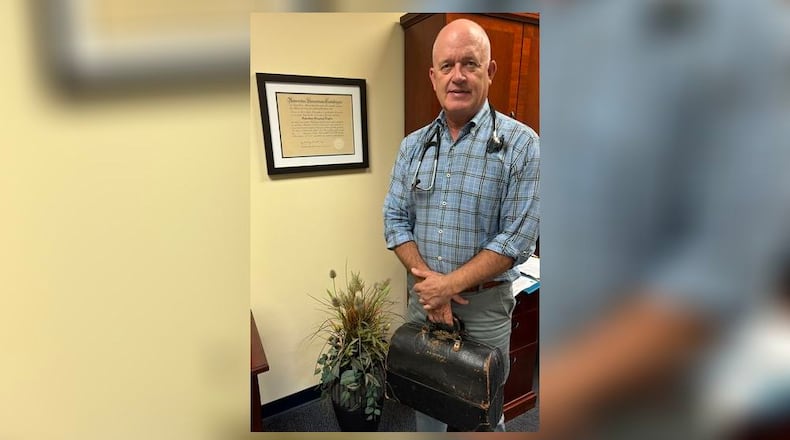Dr. Barry Taylor of Kettering is one of these physicians in the local area. But growing up, he planned a career as a more traditional doctor.
“My father (Bob Taylor) was an internist in Fort Wayne, Ind. and my two older brothers also became internists,” Taylor said. “And my mother was a nurse.”
Taylor followed his parents and brothers into the medical field, graduating from high school in Fort Wayne in 1976 and then attending Butler University in Indiana.
Taylor came to Dayton after college when he did his internship and residency at Miami Valley Hospital. He married a classmate from Dayton and the couple settled in Germantown. He completed his training and started working in internal medicine in Dayton in 1986.
“I did the more traditional route and joined a large group of internists — the oldest such practice in Dayton,” Taylor said. “The practice had a long history of caring for Daytonians going back to the Wright Brothers.”
Over the years, however, Taylor realized that his total annual income was based on how many patients he could see in an hour. The way this model worked was incentivizing doctors to spend as little time with patients as possible.
“15 years ago, I started planning a new type of practice,” Taylor said. “I was averaging 22 minutes with each patients and I still wasn’t even making $100,000 annually. And I kept hearing that I needed to see more patients per hour.”
Though Taylor knew he could increase his salary by spending less time with each patient, he didn’t feel this was right.
“There was nothing the hospital system could do about,” Taylor said. “I wanted to design a practice that paid me for being a good doctor and not just a busy doctor.”
The concept of concierge medicine is not new in the US. It originated in the 1990s and the first such practice was founded in Seattle, Wash., starting out as a practice catering to wealthy businessmen. Since then, it has evolved into a more accessible form of direct pay healthcare. According to the Harvard Medical School, the newer direct primary care models are gaining in popularity and concierge practices are expected to double from the current day to 2030.
“I designed my practice as smaller,” Taylor said. “To put that in perspective, primary care doctors will have anywhere from 2,500- 4,000 patients while I made it so I would only have 400.”
Taylor’s practice — Executive Medical Centers of Ohio — opened in 2012. Since then he has added two additional physicians. Patients pay an annual fee, and he is always available to them, 24 hours a day, seven days per week.
“My complete availability is what people like most,” Taylor said. “If they have a question or a need, they have my cell phone and they get immediate service.”
Taylor’s new practice was full within six months, and he created an advisory board of medical professionals to help lend credibility to what he was doing. He wrote letters to people he thought might be interested in his new practice and invited them to join him. He had 240 patients sign up immediately.
“It was so well received that word of mouth ended up helping me fill my practice completely,” Taylor said.
With this model, people still need to have medical insurance for hospitalization, lab work and tests. Taylor’s patients are billed $2,500 annually and that’s the only bill they ever see.
“If it’s a service we provide in the office, it’s included in the fee,” Taylor said. “We are able to save our patients some of the hoops they have to jump through with insurance.”
Because of this, Taylor doesn’t have to have a full-time employee just to deal with insurance claims. And immediate access to medical help is a plus for his patients, who can call him for any ailment and have him prescribe what they need over the phone.
“In order for a traditional doctor to bill you, you have to be seen,” Taylor said. “They really don’t want to treat you unless they see you because they can’t bill.”
Taylor, now divorced, has three children, although one son passed away years ago. He has two adult daughters, who are both, no surprise, working in the medical field. His ex-wife is a retired pediatrician. And Taylor’s biggest focus is on helping people get the care they need.
“When I started this practice, I committed to having 10% of the practice pro-bono,” Taylor said. “If people couldn’t afford it, I told them to come anyway and I didn’t worry about it.”
SHARE A PERSONAL JOURNEY
This article is part of a weekly series called “Personal Journey” that appears in the Thursday editions of Cox First Media print newspapers and on the accompanying websites. Know someone with a story to tell? Email writer Beth Anspach at banspach@ymail.com.
About the Author





